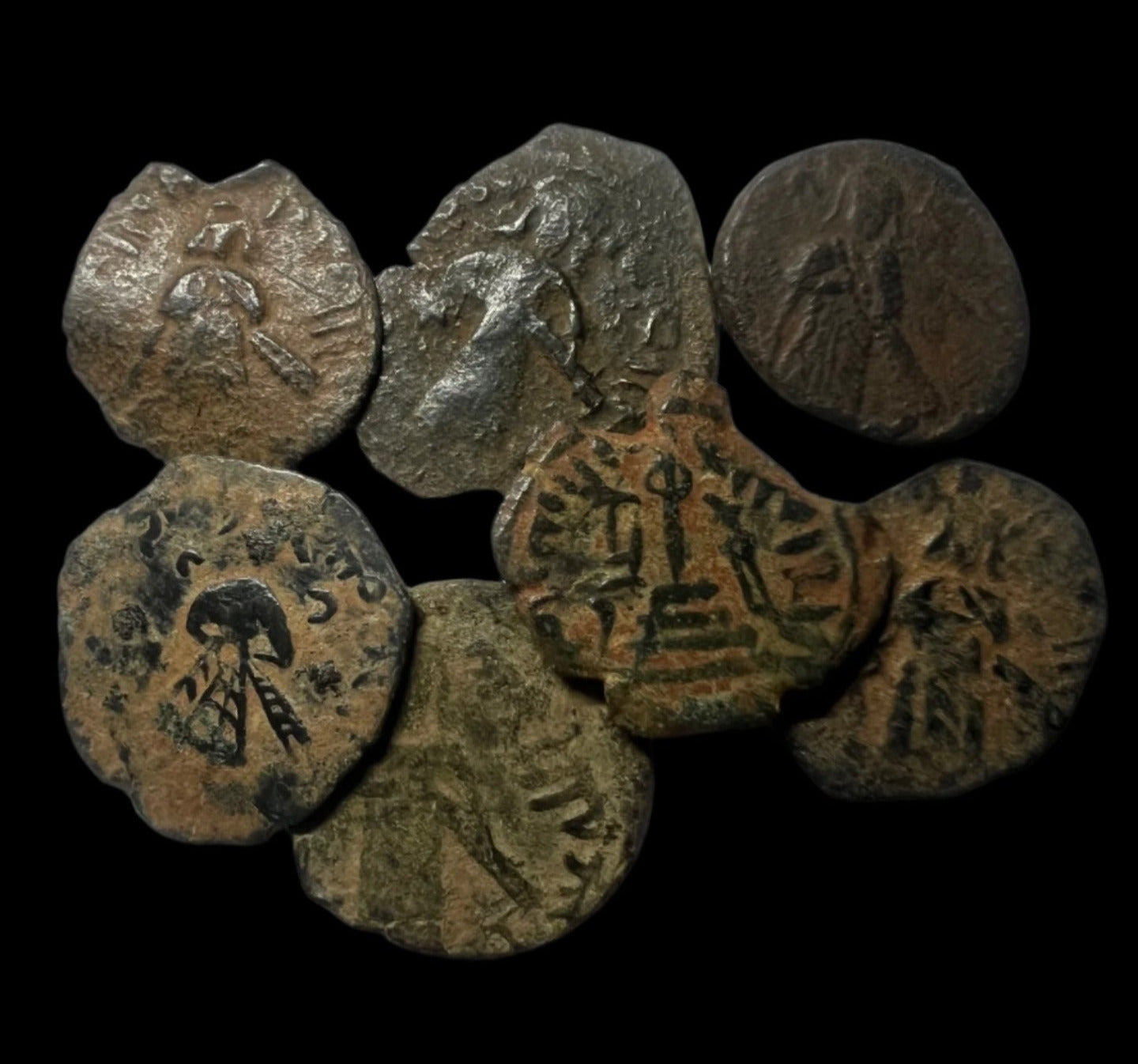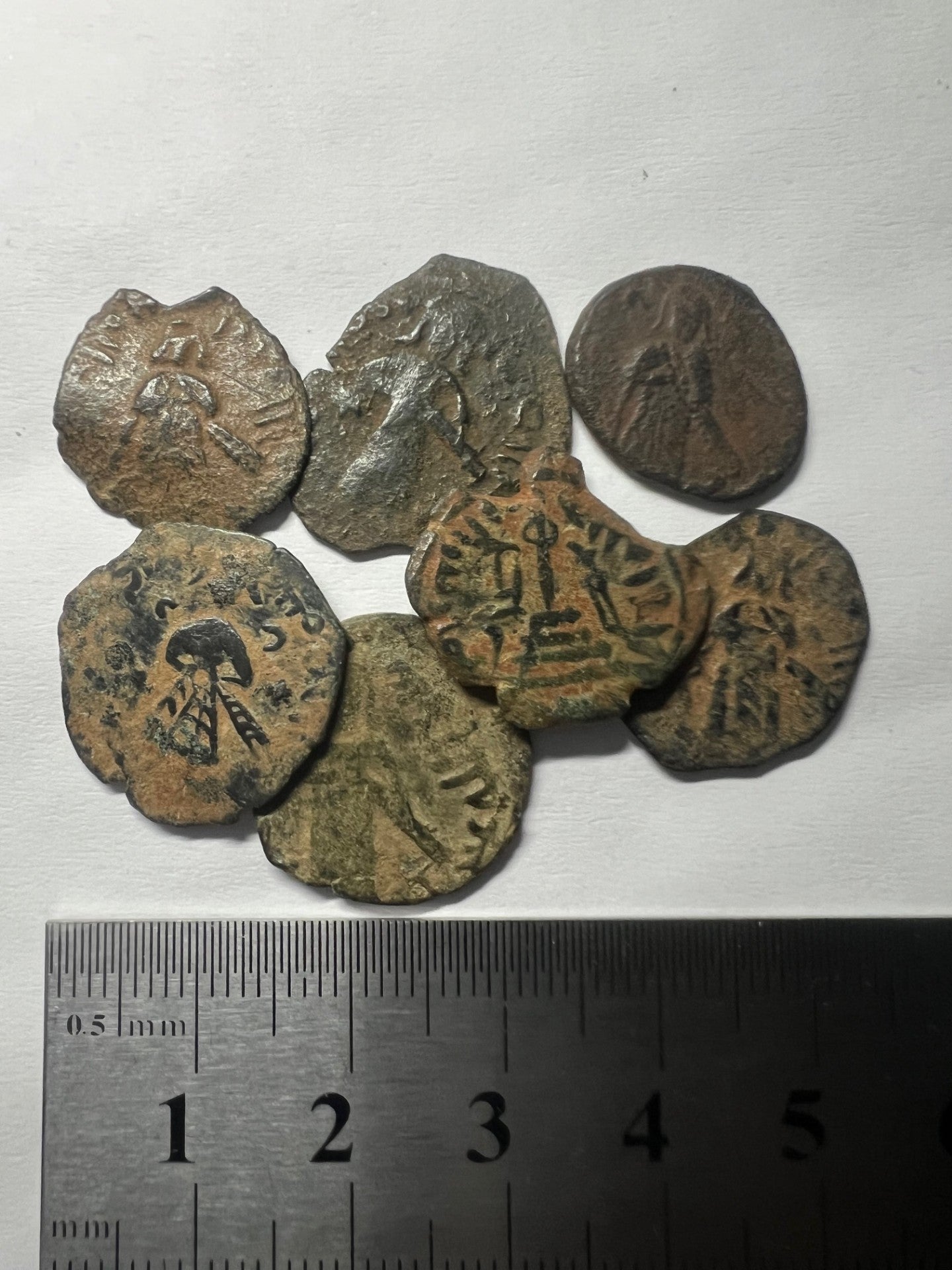Umayyad Caliphate, Arab-Byzantine: Abd al-Malik ibn Marwan (AD. 685-705)
Umayyad Caliphate, Arab-Byzantine: Abd al-Malik ibn Marwan (AD. 685-705)
"Standing Caliph'' coinage. With the name of the Caliph 'Abd al-Malik ibn Marwan.
AD. 685-705
Obverse: Caliph standing facing, holding hilt of sword
Reverse: Modified cross potent set on steps; bi-halab in Arabic upward to left
The “Standing Caliph” copper coin represents a decisive moment in the self-definition and self-representation of nascent Islam through both images and text. It is also a striking example of Islamic interaction with earlier Christian iconography, demonstrating the ways in which symbols were adopted, transformed, and given new meaning.
With the Arab conquests of Byzantine territories starting in the year 634 CE, the new rulers inherited the monetary systems of these regions. The coinage of these systems was based on gold solidi and copper folles, both depicting the Christian emperor (or other members of the imperial family) on the obverse and a denomination mark on the reverse, such as the Christian symbol of a cross on steps. The Arabs adapted this coinage several times, producing what is known as “Arab-Byzantine” coinage. This began with the Arab minting of copies of Byzantine folles of Constans II (r. 641-668 CE) and was followed by the introduction of literate legends in Greek and/or Arabic lacking any distinctive “Islamic” themes. The third and final “Arab-Byzantine” final phase was initiated by the fifth Umayyad caliph, ʿAbd al-Malik b. Marwān (r. 65-86 AH/685-705 CE) in the late 680s CE, with the launch of the “Standing Caliph” coinage. For the first time, these coins featured fully “Islamic” images and legends, reflecting the need to create a symbolic rhetoric for Islam and its growing empire in a context of confrontation with internal and external adversaries.
The obverse of this copper coin represents the caliph ʿAbd al-Malik standing. This design effectively breaks away from its “prototypical” Byzantine imperial iconographic model, which consisted of the image of the emperor and crosses, here replaced with that of the caliph holding a sword in a scabbard (hanging to his left). This figural representation of the caliph can be understood as emerging from Christian themes, modifying them to produce a novel “Islamic image” of the ruler as conqueror. The accompanying text reads “For the servant of God, ʿAbd al-Malik, Commander of the Believers”. It can be understood as a response to the Umayyad caliph’s rival, Ibn al-Zubayr (r. 64-73 AH/683-92 CE), who had already minted his own coins, on which he claimed to be the “Commander of the Believers.”
The reverse similarly actively engages both of ʿAbd al-Malik’s “adversaries,” Christian and Muslim. On the one hand, this side of the coin is flanked by what has been dubbed a “transformed cross-on-steps”, a pole resting on three steps topped by an ellipse. Again, this symbolism ultimately harkens back to a Byzantine prototype: the cross found on the gold solidi of Heraclius (r. 610-641 CE). The caliph ingeniously retained the overall aspect of the previous Byzantine design but disposed of the horizontal crossbar to eliminate the potent Christian symbol, the result probably being meant to resemble the Greek letter phi (Φ), the first letter for follis, as a mark of value, while at the same time conveying the image of a “de-Christianized” cross.
On the other hand, the profession of faith on the reverse which reads “There is no divinity but God, He is alone, Muḥammad is the messenger of God” should most certainly be viewed as echoing Ibn al-Zubayr’s equivalent use of this formula on the coins that he minted earlier to claim caliphal legitimacy through his affiliation with the Prophet.
Coins are cryptic but enduring objects. Thanks to these, we can glimpse how early Islamic monetary systems, symbolic strategies, and representations of sovereignty were co-produced with the Christian cultures of the conquered.
Product features
Product features
Materials and care
Materials and care
Merchandising tips
Merchandising tips
Share





